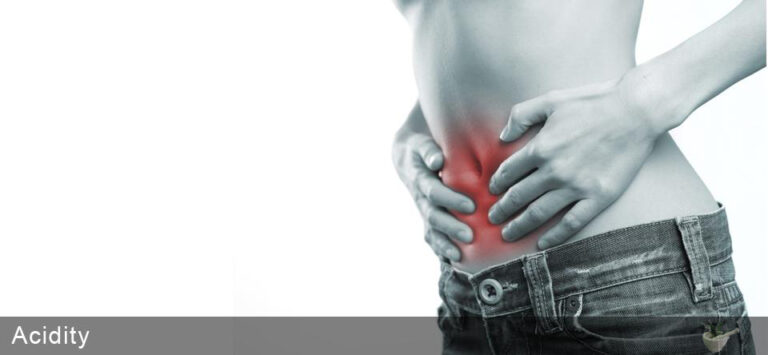Acidity

Acidity refers to a set of symptoms caused by an imbalance between the acid secreting mechanism of the stomach and proximal intestine and the protective mechanisms that ensure their safety. The stomach normally secretes acid that is essential in the digestive process. This acid helps in breaking down the food during digestion. When there is excess production of acid by the gastric glands of the stomach, it results in the condition known as acidity.
Causes, incidence, and risk factors
The stomach, intestines, and digestive glands secrete hydrochloric acid and various enzymes, including pepsin that break down and digest food. The stomach must also be protected from the same acid and enzymes, or it too can be attacked by the gastric juices. The acid may enter the lower part of the Oesophagus (Gastro-Oesophageal Reflux), due to some weakness in the normal sphincter mechanism that prevents such reflux. This causes heartburn. It commonly occurs after meals and is brought on by excess intra-abdominal pressure like lifting weights or straining.
Ulcers also occur as a result of over secretion of acid. This may happen when there is an imbalance between the digestive juices used by the stomach to break down food and the various factors that protect the lining of the stomach and duodenum (the part of the small intestine that adjoins the stomach). A peptic ulcer is a raw area in the lining of the upper part of the small intestine (duodenal ulcer) or the stomach (gastric ulcer), whose protective mucosal lining has been eroded away by the gastric juices. Duodenal ulcers are three times more common than gastric ulcers. Hydrochloric acid, secreted in the stomach, is one of the factors in the development of ulcers, but is not solely responsible. Acid production in patients with duodenal ulcers tends to be higher than normal, while in those with stomach or gastric ulcers, it is usually normal or lower.
Symptoms and Signs
Dyspepsia and heartburn are often the main symptoms of acidity. Heartburn is characterised by a deeply placed, burning pain in the chest behind the sternum (breast-bone). It occurs after meals and is brought on by excess intra-abdominal pressure like lifting weights or straining. It can also occur at night on lying down and is relieved when the individual sits up. The pain is very closely related to posture. Regurgitation of the gastric contents may also occur. The symptoms of ulcers are mainly pain that can be either localised or diffused. Sometimes it radiates to the back or to the chest.
